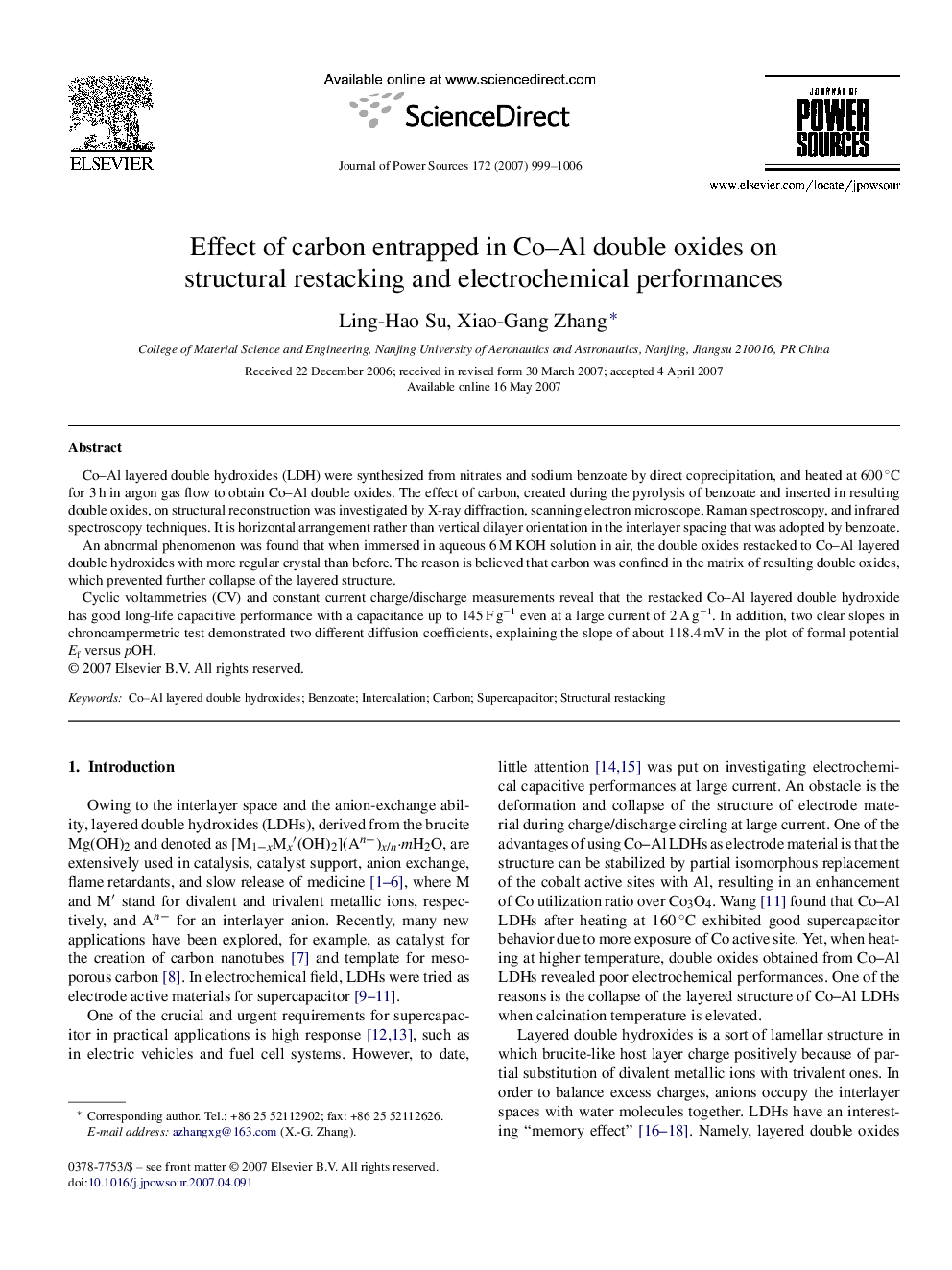| Article ID | Journal | Published Year | Pages | File Type |
|---|---|---|---|---|
| 1286230 | Journal of Power Sources | 2007 | 8 Pages |
Co–Al layered double hydroxides (LDH) were synthesized from nitrates and sodium benzoate by direct coprecipitation, and heated at 600 °C for 3 h in argon gas flow to obtain Co–Al double oxides. The effect of carbon, created during the pyrolysis of benzoate and inserted in resulting double oxides, on structural reconstruction was investigated by X-ray diffraction, scanning electron microscope, Raman spectroscopy, and infrared spectroscopy techniques. It is horizontal arrangement rather than vertical dilayer orientation in the interlayer spacing that was adopted by benzoate.An abnormal phenomenon was found that when immersed in aqueous 6 M KOH solution in air, the double oxides restacked to Co–Al layered double hydroxides with more regular crystal than before. The reason is believed that carbon was confined in the matrix of resulting double oxides, which prevented further collapse of the layered structure.Cyclic voltammetries (CV) and constant current charge/discharge measurements reveal that the restacked Co–Al layered double hydroxide has good long-life capacitive performance with a capacitance up to 145 F g−1 even at a large current of 2 A g−1. In addition, two clear slopes in chronoampermetric test demonstrated two different diffusion coefficients, explaining the slope of about 118.4 mV in the plot of formal potential Ef versus pOH.
